Films from the country "pologne", sorted by revenue
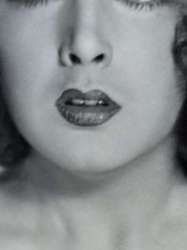
A dangerous affair (1930)
Directed by Michał Waszyński
Origin Pologne
Genres Drama, Crime, Romance
Actors Bogusław Samborski, Betty Amann, Eugeniusz Bodo, Zula Pogorzelska, Adolf Dymsza, Kazimierz Krukowski

Exile to Siberia (1930)
, 1h29Directed by Henryk Szaro
Origin Pologne
Genres Drama, Historical, Romance
Themes Political films
Actors Adam Brodzisz, Jadwiga Smosarska, Eugeniusz Bodo, Bogusław Samborski, Mira Zimińska
During the Revolution of 1905, a young Polish revolutionary is arrested in Warsaw and set to Siberia by the Russian authorities. His girlfriend travels out and helps him escape.

Pan Tadeusz (1928)
, 2h4Directed by Ryszard Ordyński
Origin Pologne
Genres Historical, Romance
Actors Wojciech Brydziński, Paweł Owerłło, Józef Śliwicki, Stefan Jaracz, Jerzy Leszczyński, Ludwik Fritsche
Un émigré à Paris se souvient du passé idyllique de son pays natal - plein d'espoir, d'amour, de bonheur, de personnages hauts en couleurs et de paysages magnifiques.
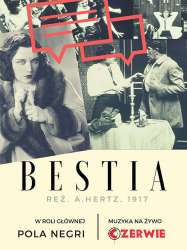
The Polish Dancer (1917)
, 48minutesOrigin Pologne
Genres Drama, Romance
Actors Pola Negri, Maria Dulęba, Lya Mara, Maria Duleba
Pola Basnikov is an adolescent girl living with her parents. She likes to stay out late and rabblerouse with her friends, to the worry of her parents. One night she and her father get into a fight, so Pola decides to run away. Her boyfriend, Dmitri, helps her get lodging at a hotel. Pola gets him drunk, takes all his money, and leaves, leaving behind a note promising to pay him back. Pola gets work as a model at a modeling studio, which opens up work for her as a cabaret dancer. One of the cabaret's patrons, a married man named Alexi, is taken by Pola, and the two engage in an affair, with Pola unaware that Alexi already has a family. Once Alexi gets the courage to leave his wife, he and Pola go to Cafe de Paris to celebrate. There, her old boyfriend, Dmitri, waits on them, but does not recognize Pola. Pola repays the money she took from him, leaving it with a note on the table. When Dmitri finds the money and the note, he is enraged and plans to take revenge on Pola. Meanwhile, Alexi's wife, Sonya, grants him a divorce, and moves in with her mother, only to become deathly ill. Pola learns that Alexi is married and casts him off, not realizing that he has already left his family for her. Soon after, the vengeful ex-boyfriend Dmitri kills Pola. Alexi tries to reconcile with his wife, only to learn that she has succumbed to her illness and has died.

Nad życie (2012)
, 1h30Origin Pologne
Genres Drama
Actors Olga Bołądź, Michał Żebrowski, Danuta Stenka
La vie privée d'Agata Mróz, son amour, sa maternité, et sa lutte contre la maladie.

Crulic: The Path to Beyond (2011)
, 1h13Origin Pologne
Genres Biography, Documentary, Animation
Themes Prison films
Actors Vlad Ivanov, Sandrine Bonnaire, Jamie Sives
Claudiu Crulic is dead and recounts from beyond the grave how his mother and sister have difficulties recognising his body. He is significantly thinner than last time they saw him, and looks closer to 70 years old than his actual age of 33. Crulic had supported himself by buying goods in Poland and then selling them in his native Romania. In 2007 he was arrested for theft in Poland. At the time of the crime he had been in Italy. Crulic's protests were dismissed and his pleads to the Romanian consul for help were fruitless. Crulic began a hunger strike. Prison doctors dismissed signs of his deteriorating health. When they finally agreed to force-feed him, his lung was injured by a needle. After Crulic's death, authorities and the doctors deny responsibility.

The Mole (2011)
, 1h48Directed by Rafael Lewandowski
Origin Pologne
Genres Drama, Thriller
Actors Borys Szyc, Marian Dziędziel, Magdalena Czerwińska, Wojciech Pszoniak, Bartłomiej Topa, Rafael Lewandowski
Paweł, un jeune Polonais découvre que son père dont il avait toujours cru qu’il était un des héros du syndicat Solidarność 30 ans plus tôt, a peut-être dissimulé un passé moins glorieux, à la solde du régime. Leur relation est mise à mal et malgré des efforts des uns et des autres pour étouffer les fantômes du passé, ceux-ci vont tout de même ressurgir.

Battle of Warsaw 1920 (2011)
, 1h50Directed by Jerzy Hoffman
Origin Pologne
Genres Drama, War, Musical theatre, Historical
Actors Daniel Olbrychski, Borys Szyc, Natasza Urbańska, Marian Dziędziel, Bogusław Linda, Olga Kabo
Le poète polonais Jan Krynicki (Borys Szyc), à la veille de son départ au combat avec l'armée polonaise comme uhlan (lancier), épouse l’actrice Ola Raniewska (Natasza Urbańska). Le mariage est célébré par l’abbé Ignacy Skorupka (Łukasz Garlicki).
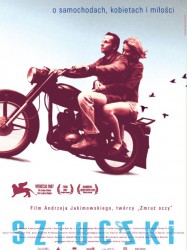
Tricks (2007)
, 1h35Directed by Andrzej Jakimowski
Origin Pologne
Genres Drama, Comedy
Themes Films about children
Actors Ewelina Walendziak, Joanna Liszowska
A charming bittersweet narrative unfolds from director Andrzej Jakimowski. This is the story of siblings Stefek, 6, and Elka, 18, along with Elka's car mechanic boyfriend Jerzy during one sun-drenched summer. The siblings live with their shopkeeper mother. Their father has left their mother for another woman, unaware of Stefek's existence. After a chance encounter at the local railway station, and despite a denial by his sister that this was his father, Stefek decides to challenge fate to engineer another meeting. He believes that the chain of events he sets in motion will help him get closer to his father who abandoned his mother. His sister Elka teaches him how to bribe fate with small sacrifices. Tricks played, coupled with a number of coincidences eventually bring the father to the mother's shop but the long awaited re-union does not immediately materialise as expected. As a last chance Stefak tries his good luck with the most risky of his tricks.
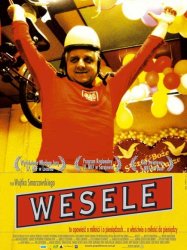
The Wedding (2004)
, 1h49Directed by Wojciech Smarzowski
Origin Pologne
Genres Drama, Comedy
Themes Films about marriage
Actors Marian Dziędziel, Tamara Arciuch, Bartłomiej Topa, Maciej Stuhr, Arkadiusz Jakubik, Witold Wieliński

Fallen Art (2004)
, 6minutesOrigin Pologne
Genres Drama, War, Comedy, Animation
Actors Arkadiusz Jakubik
Fallen Art presents the story of General A, a self-proclaimed artist. His art, however, consists of a deranged method of stop motion photography, where the individual frames of the movie are created by photographs made by Dr. Johann Friedrich, depicting the bоdies of deаd soldiers, pushed down by Sergeant Al from a giant springboard onto a slab of concrete.
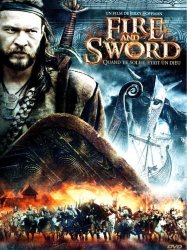
With Fire and Sword (1999)
, 2h55Directed by Jerzy Hoffman
Origin Pologne
Genres Drama, War, Adventure, Historical, Crime, Romance
Actors Izabella Dorota Skorupko, Michał Żebrowski, Alexandre Domogarov, Małgorzata Foremniak, Krzysztof Kowalewski, Bohdan Stupka
The story is set in Ukrainian lands of the Crown of the Kingdom of Poland of the 17th century during the Khmelnytsky Uprising 1648-51. A Polish knight Skrzetuski and a Cossack otaman Bohun fall in love with the same woman, Helena. Their rivalry unfolds against the backdrop of a Cossack uprising led by Bohdan Khmelnytsky aimed at reclaiming the control of the land from the hands of the Polish nobles. Historic events form a framework for an action- and character-driven plot, and fictional characters mingle with historic ones. The movie, as the book, culminates with the savage Battle of Berestechko.
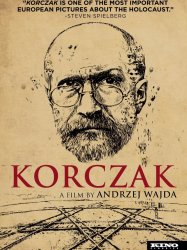
Korczak (1990)
, 1h55Directed by Andrzej Wajda
Origin Pologne
Genres Drama, War, Biography, Historical
Themes Films about religion, Political films, Films about Jews and Judaism
Actors Wojciech Pszoniak, Aleksander Bardini, Ewa Dałkowska, Anna Mucha, Agnieszka Krukówna, Teresa Budzisz-Krzyżanowska
Le film se passe pendant la Seconde Guerre mondiale, en 1942, dans le ghetto de Varsovie. Janusz Korczak a la charge de plusieurs centaines d'orphelins : il doit subvenir à leurs besoins dans des conditions très difficiles. On peut voir, par exemple, sur des photos d'époque prises dans ces orphelinats, que les enfants étaient pieds nus.

The Hostage of Europe (1989)
, 2h4Directed by Jerzy Kawalerowicz
Origin Pologne
Genres Drama, Historical
Themes Histoire de France, Napoleonic Wars films
Actors Roland Blanche, Vernon Dobtcheff, Didier Flamand, François Berléand, Ronald Guttman, Isabelle Petit-Jacques
Chronique de la détention de Napoléon sur l'ile de Sainte-Hélène, ses relations avec son entourage et ses affrontements avec Hudson Lowe, le gouverneur britannique.
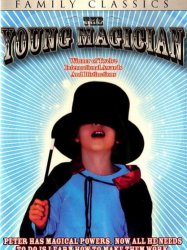
The Young Magician (1987)
, 1h39Origin Pologne
Genres Drama, Fantastic, Comedy, Fantasy
Actors Grażyna Szapołowska, Mariusz Benoit, Jan Machulski, Piotr Polk
Pierrot est un jeune garçon de 11 ans qui rêve de devenir magicien. Un jour, il découvre qu’il a véritablement des pouvoirs magiques qui lui permettent de déplacer les objets par télékinésie. Cependant, il ne contrôle pas bien ces pouvoirs, ce qui n’est pas sans entraîner diverses mésaventures et causer des difficultés avec son entourage. Mais Pierrot fait bientôt la rencontre d’Alexandre ; avec ce nouvel ami, il apprend à maîtriser ses pouvoirs. Pierrot réussira même à empêcher qu’une bombe ne détruise la ville où ils habitent.
 Connection
Connection